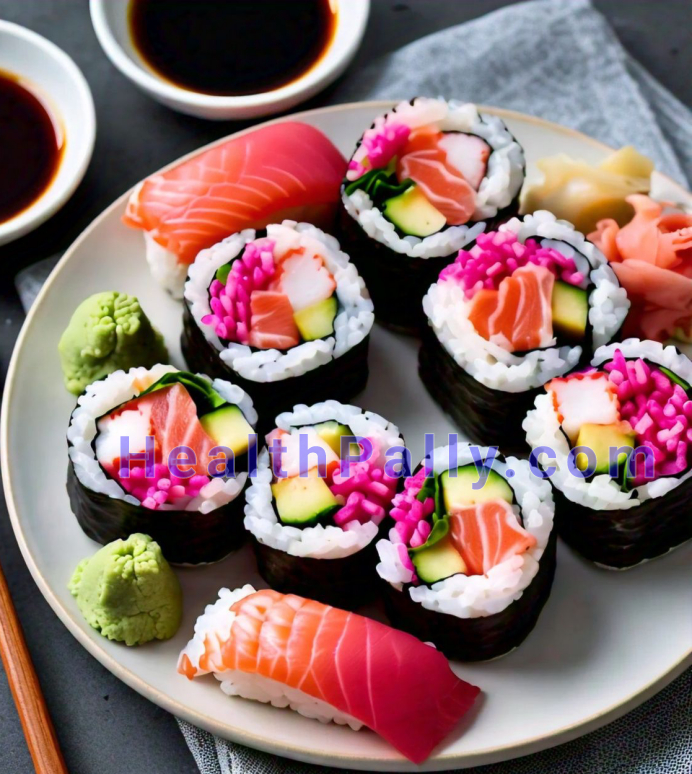Sushi has taken the world by storm. Delighted foodies can find a sushi restaurant near them with ease.
Many people have heard of sushi and tasted it in person.
What began as a regional delicacy in Japan has quickly turned into something people all over the globe can savor.
The use of varied flavors combine to create a pleasing, organic whole that makes a perfect light lunch or dinner.
Many sushi restaurants have a wide selection of rolls on the menu.
When looking for this dish at a sushi restaurant, it’s a good idea to understand the most common types of sushi rolls likely to be on hand.
Customers can pick out familiar favorites at their sushi restaurant and try out new combinations.
On the Menu
While any given sushi restaurant owner may tweak the menu, in general the sushi restaurant offers certain basic rolls.
Nigiri is typically a topping served on top of seasoned rice. The fish can be raw but this is not always true.
Sashimi is often seen on a sushi restaurant menu. It’s fish or any kind of shellfish served without toppings of any kind including rice.
Maki makes use of rice and a filling. The two are wrapped together to form a roll.
Uramaki is another common item found at a sushi restaurant. It’s similar to maki in that it uses seaweed and rice as well as a filling.
At the same time, the rice is on the outside rather than inside.
There’s also typically a dipping sauce or a sauce that may be used when composing it.
Temaki is differentiated on many sushi restaurant menu because it is cone shaped by hand before being presented.
It’s fun to eat but not as easily shared.
Common Ingredients
The kind of fish and other ingredients used in a sushi restaurant can vary greatly.
However, most restaurants make use of certain ingredients. Look for these terms on the menu before ordering.
Ahi is raw tuna noteworthy for being full of fatty flavor.
Aji is raw Spanish mackerel with an oily texture.
Amaebi is the Japanese term for sweet shrimp served raw.
Adventurous eaters can try Anago or eel. It’s typically deep fried before being placed in a roll.
Aoyagi is round, raw clam much cherished by those who like clams with lots of sea notes.
Ebi is another form of shrimp. Unlike amaebi, it’s served cooked.
Hamachi is particularly popular all over the world. This is raw yellow tail fish.
Hirame is raw halibut. It’s especially likely to be seen along the coastal city areas.
Hotate are succulent raw scallops. They make an ideal background for flavored rice.
Ikura or salmon roe are often used as an accompaniment to many types of sushi rolls.
Sake is raw salmon.
Tako is a special favorite of Japanese food lovers. It’s cooked octopus.
Tamago is an expertly cooked egg omelette. It is carefully spread out and then sliced into small strips for rolls.
Toro is one of the most prized of all sushi restaurant ingredients.
Uni is raw sea urchin. The delicate flesh makes it a common ingredient in many places.
Classic Sushi Rolls
New variations are always popping up. Inventive chefs love to play around with ingredients and revamp existing classics.
At the same time, there are many rolls that are usually seen in most restaurants.
The kind of roll any customer might like depends on their personal preferences.
Americans and others cultures have come up with their own regional variations.
For example, the Philadelphia roll adds cream cheese to salmon and avocado.
A tiger roll is shrimp, avocado, cucumber and salmon roe.
The dragon roe mixes eel and cucumber with crab and avocado.
Other Types
There are lots of other types of rolls. A spider roll has soft shell crab with cucumber, mayo and avocado.
The crunch roll is designed to bring the focus on the crunch and keep it there. This is where tuna, seaweed and tempura all come together.
A spicy tuna roll takes good quality tuna and adds mayo and chili sauce.
The rainbow roll is about the use of color and varied types of raw fish. It typically combines several types of fish including salmon, tuna and yellow tail along with shrimp and avocado.
The caterpillar roll brings together eel with egg, cucumber and avocado.
What to Eat With It?
Most restaurants offer several basic sauces and other accompaniments with their sushi.
Wasabi is grated Japanese horseradish. It’s often served form into a paste.
Sliced ginger is another popular item found in Japanese restaurants.
The horseradish and ginger are intended to be mixed with soy sauce.
This helps clear the mouth between courses and adds flavor to each roll at the same time.
Many people see other items in the menu that work well with kind of dish.
Sliced daikon radishes add color and provide background crunch.
Edamame are boiled soy beans frequently seen on Japanese restaurant menus and ideal as a way to add some crunch.
Your Choices
If you’ve never eaten this kind of dish before, consider a selection of rolls. Many rolls are reasonably priced, making it easy to sample lots of different kinds.
Bring along friends with you. Those who’ve eaten in Japanese restaurants before can point to choices you might like.
Your friends who haven’t can join you for a meal devoted to exploring a whole new world of flavor.
